Haku | Yellowtail Kingfish
Often found off Te Pari Taha | Sulphur Point (15), haku have bright yellow fins and can grow to 1.7 m long and weigh up to 56 kg. For more information, visit NIWA, the National Institute of Water and Atmospheric Research.
What you might see during your Ngā Tapuwae ki Te Papa | Footprints on Te Papa journey.
Te Papa Peninsula has a total area of 1100 hectares which runs from Te Pari Taha | Sulphur Point and includes the CBD and the suburbs of Tauranga South, Gate Pā, Parkvale/Merivale and Greerton, right up to Barkes Corner. Much of the peninsula was traditionally used by Māori as an area for māra kai | gardening.
Due to being geographically isolated for 500 million years, Aotearoa New Zealand has developed some amazing and often unique species. Ngā Tapuwae ki Te Papa | Footprints on Te Papa introduces you to some of the ngāi kīrehe me ngāi tipu | flora and fauna that either grow, make their home on, or visit Te Papa Peninsula in the area from Te Pari Taha | Sulphur Point to Sixth Avenue. There are several notable, heritage, and significant groups of trees, and two heritage gardens, at The Elms | Te Papa Tauranga (19) and Brain Watkins House (3).
The mission of the Western Bay Wildlife Trust is to protect, restore and enhance native populations and ecosystems around the Western Bay of Plenty, and to educate through knowledge and involvement. The team is made up of passionate and dedicated individuals, with a diverse background in environmental research, ecology, biological sciences, animal behaviour and environmental monitoring. For more information, visit Western Bay Wildlife Trust.
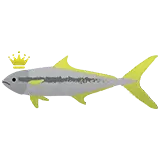
Often found off Te Pari Taha | Sulphur Point (15), haku have bright yellow fins and can grow to 1.7 m long and weigh up to 56 kg. For more information, visit NIWA, the National Institute of Water and Atmospheric Research.
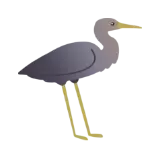
Now only seen occasionally by the Chapel Street Bridge (13), the matuku moana is a dark grey wading bird with an estimated population of only 300-500. For more information, visit New Zealand Birds Online.
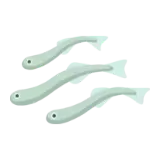
Found in the Waikareao Estuary, many of the spawning grounds of īnanga have been destroyed and the species are At Risk/Declining. For more information, visit the Department of Conservation.
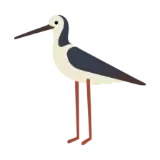
A dainty wading bird with very long pink legs and a long, fine, black bill, the poaka can be found around wetland and coastal areas. For more information, visit New Zealand Birds Online.
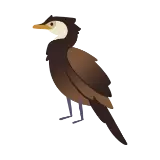
The kawaupaka has the most variable plumage of any New Zealand shag. Nests in a pōhutukawa tree at Monmouth Redoubt (23). For more information, visit New Zealand Birds Online.
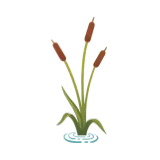
Raupō wetlands provide valuable habitat for wildlife. Found alongside Tākitimu Drive near Waikareao Estuary, the plant has many uses. For more information, visit Manaaki Whenua | Landcare Research.
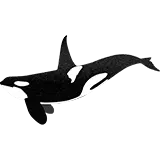
Most often seen in June, and again from October to December foraging for stingrays near the Matapihi Railway Bridge (64). For more information, visit Te Ara - the Encyclopedia of New Zealand.
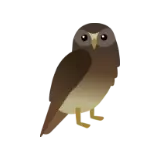
This nocturnal bird is found on Te Papa Peninsula and Mauao, its distinctive “more-pork” call commonly heard at night. For more information, visit New Zealand Birds Online.
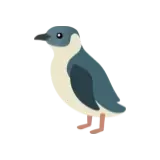
The smallest species of penguin lives on Mauao and is thought to still nest in the cliffs at the end of First Avenue. For more information, visit New Zealand Birds Online.
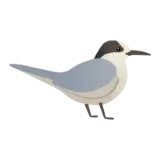
The population has declined markedly over the last 40 years and is currently regarded as At Risk/Declining. They used to nest on the poles outside the Harbourside Restaurant (65) but this has ceased since the poles they nest on have been capped to prevent them nesting there during the construction of the new pier. They still nest on the Hairini Bridge, but sadly now in low numbers.
For more information, visit New Zealand Birds Online.
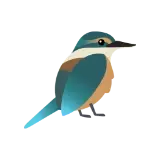
A distinctive bird with a green-blue back, buff to yellow undersides and a large black bill. Found all over Te Papa Peninsula. For more information, visit New Zealand Birds Online.
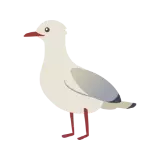
They hang out at Fisherman's Wharf (32), taking advantage of those eating at Bobby's. Nests at the Port of Tauranga. For more information, visit New Zealand Birds Online.
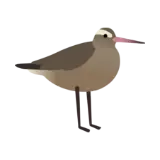
They perform the longest nonstop flights of any non-seabird! Forages on the intertidal mudflats of Waikareao Estuary and roosts at the Port of Tauranga. For more information, visit New Zealand Birds Online.
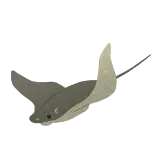
Often seen in Te Awanui | Tauranga Harbour, whai can grow to four metres long and have serrated, poisonous spines at the base of their tails. For more information, visit New Zealand Geographic.